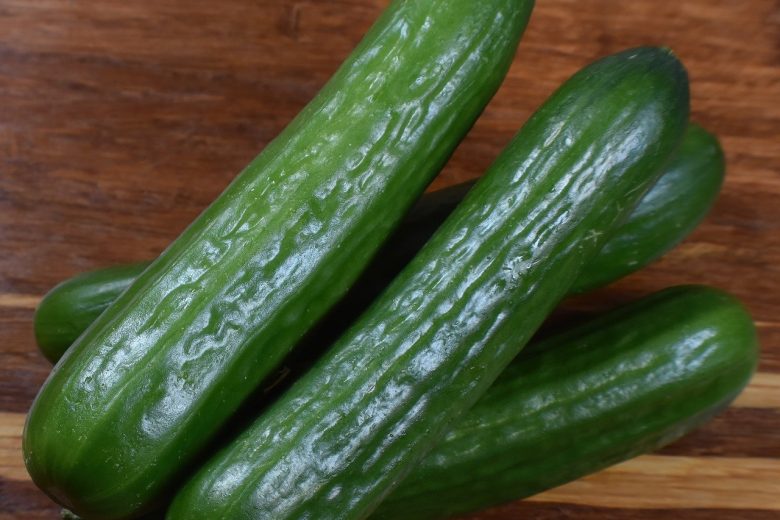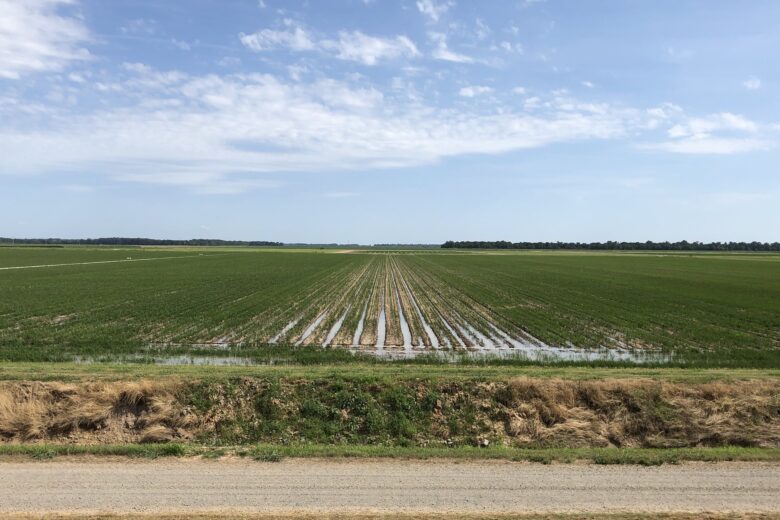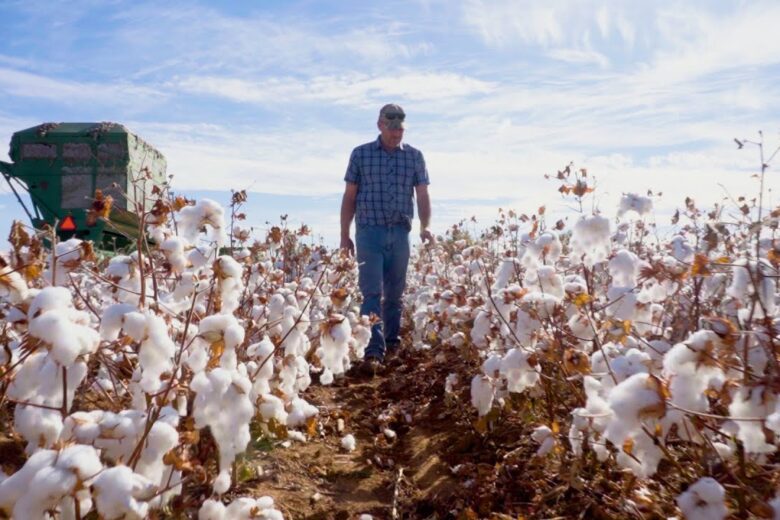Rice is one of the world’s most important crops and is a staple food for millions of people worldwide. Unfortunately, rice farms are susceptible to a wide range of diseases, some of which can cause significant losses in yield and quality.
The six most common diseases of rice are a bacterial blight, sheath blight, false smut, stem rot, panicle blight, and brown spot.
Fortunately, there are numerous methods for managing and treating these diseases to ensure that a healthy crop is produced.
To learn all you need to know about the 6 common diseases for rice farms including how to treat them, ensure you read through this article to the end.
6 Common Diseases Of Rice Farm And How To Treat
There are several diseases that affect rice farms, however, we will only discuss the 6 common diseases of rice farms. Here are the 6 common diseases we will discuss.
#1. Bacterial Blight
Category: Bacterial Disease
Bacterial blight is an overwhelming disease of rice and can cause up to 70% yield loss in susceptible varieties when conditions are conducive to the disease. Early occurrence of the disease leads to higher losses in yield.
Read Also: 6 Common Diseases Of Onion Farm And How To Treat
Causes
Bacterial blight in rice farms is caused by the bacteria Xanthomonas oryzae pv. oryzae, which is primarily spread by infected seed, water, and wind-borne splashing rain.
Symptoms
Symptoms of this blight include water-soaked lesions on leaves, yellowing or wilting of young leaves, and white streaking on the midrib.
Treatment
Treatment for bacterial blight in rice farms is typically chemical-based, using copper-based products, streptomycin, or oxytetracycline.
Read Also: Plants Susceptible To Spider Mites
Also, common fungicides used to treat bacterial blight include Agricin, a combination of Streptomycin sulphate and Tetracycline hydrochloride, and a combination of copper and mancozeb-containing fungicides for control.
Herbal treatments for bacterial blight in rice farms include garlic, neem oil, and turmeric.
Prevention
To prevent bacterial blight in rice farms, you should avoid overhead watering and plant-resistant varieties of rice. Additionally, they should practice good sanitation and destroy infected plants to reduce the spread of the disease.
Control
To control bacterial blight in rice farms, you should rotate their crops, use disease-free seeds, and practice proper irrigation and drainage.
#2. Sheath Blight
Category: Fungal Disease
The devastating disease of rice known as sheath blight, caused by the necrotrophic fungus Rhizoctonia solani Kühn, can be intensified by the utilization of high yielding semi dwarf cultivars, dense planting, and high doses of nitrogenous fertilizers.
Read Also: Plants Susceptible To Powdery Mildew
Causes
Sheath blight in rice farms is caused by a fungus known as Rhizoctonia solani. It is a soil-borne pathogen that can infect the stem and leaves of the rice plant.
Symptoms
Symptoms of sheath blight in rice farms include discolored lesions on the stem, leaf sheath, and leaf blade of the plant. These lesions will appear as tan to brown patches on the plant and may cause wilting and death of the plant.
Treatment
Treatment for sheath blight in rice farms is usually done with the use of fungicides.
Common fungicides used to fight rice sheath blight can include Azoxystrobin, Validamycin, Trifloxystrobin, Propiconazole, Carbendazim, Hexaconazole, and Flusilazole.
Read Also: 100 Plants Susceptible To Honey Fungus
These chemicals can be applied individually or in combination for optimal results, and are applied at the base of the plant and on the leaves to eliminate the pathogen.
Herbal treatments such as neem oil can be used to treat sheath blight in rice farms. The neem oil should be applied directly to the affected areas of the plant and is said to be effective in reducing the severity of the symptoms.
Prevention
Prevention of sheath blight in rice farms is best achieved through the use of proper cultural practices. This includes avoiding overcrowding of plants, avoiding wetting the leaves and stem during irrigation, and avoiding excessive nitrogen fertilization.
Read Also: 5 Common Diseases of Pepper Farm [Treatment]
Control
Sheath blight in rice farms can be controlled through crop rotation and the use of resistant cultivars. This can help to reduce the risk of the disease spreading to other plants in the field.
#3. False Smut
Category: Fungal Disease
False smut is one of the most common diseases in rice farms. this disease affects rice cultivation often leading to high yield loss.
Causes
False smut in rice farms is caused by a fungus called Ustilaginoidea virens, which is spread through wind, water, or soil.
Read Also: 5 Common Diseases Of Cucumber And Treatment
Symptoms
False smut in rice farms can cause yellowish-green lesions on the leaves, stems, and husks of the rice plants. These lesions can eventually turn black and become covered in a black spore mass.
Treatment
Chemical fungicides can be used to treat false smut in rice farms. Inorganic fungicides like Simeconazole (Fluorophenyl) and 2.5% Wenquning (Bacillus subtilis) have been employed to combat the disease. It is important to use fungicides as per the instructions mentioned on the label.
Herbal treatment of false smut includes various herbal remedies that have been used to treat false smut, including garlic, ginger, turmeric, neem oil, and copper sulfate.
Prevention
To prevent false smut in rice farms, you should avoid planting rice in infected soils, choose varieties of rice that are resistant to the fungus, and monitor the farm for signs of infection.
Read Also: 5 Common Diseases of Carrots and Treatment
Control
To control false smut in rice farms, you should rotate your crops, avoid over-watering, and practice good sanitation.
Also, implement proper cultural practices: Proper cultural practices like proper irrigation and fertilization can help reduce the incidence of false smut.
In addition, biocontrol agents like Trichoderma harzianum can be used to control false smut in a rice farm. These agents can be applied as seed treatments or as soil drenches.
#4. Stem Rot
Category: Fungal Disease
Stem Rot in rice farms is a fungal disease caused by the fungus Sclerotium oryzae.
Causes
Stem rot is caused by the fungus Sclerotium oryzae which is found in soil and water. This fungus is spread through water splashes and wind-blown soil.
Symptoms
The disease is characterized by the presence of white, cottony growths on the stem of the rice plant. The stem will also become discolored and soft. The leaves of the rice plant may also yellow, wilt, and die.
Treatment
Chemical fungicides may be used to control this disease. Several fungicides have been found to be effective in reducing the severity of stem rot disease, including Benomyl, Edifenphos, Thiophanate Methyl, and Propiconazole.
However, it is important to note that frequent applications may be needed to keep the disease in check.
To use herbal treatment, some herbs can be used to control stem rot in rice farms. These include neem, garlic, and ginger.
Prevention
To prevent stem rot in rice farms, you should practice crop rotation and avoid overcrowded planting. They should also use disease-resistant varieties and control weeds. It is also important to keep the soil well-drained and use good quality seed.
Control
Natural, biological, and chemical control methods can be used to control stem rot in rice farms. Natural methods include crop rotation, avoiding overcrowded planting, and using disease-resistant varieties.
Biological control methods involve using beneficial organisms such as nematodes or fungi to control the disease. Chemical control methods include using fungicides and insecticides.
#5. Panicle Blight
Category: Fungal Disease
Panicle blight is a disease of rice that can cause significant yield losses. It is caused by the fungus Pyricularia grisea, which can produce a large number of spores that are spread to other plants when wind and water carry them.
Causes
The fungus Pyricularia grisea can infect rice plants through wounds in the leaf or stem, or it can also be spread through soil, water, or insect pests.
Symptoms
The most visible symptom of panicle blight is the death of the panicles (the flowering head of the plant), which turn white, dry up, and fall off. Other symptoms include wilting, brown spots on the leaves and stunted growth.
Treatment
Chemical fungicides can be used to treat panicle blight, but these can be expensive and can cause environmental damage.
Alternatively, you may choose to apply biopesticides, such as Trichoderma harzianum, which is a naturally occurring fungus that can help control panicle blight.
Some herbal remedies have been used to treat panicle blight, such as neem oil, garlic oil, and sesame oil. These can be applied directly to the infected plants, but they may not be as effective as chemical fungicides.
Prevention
The best way to prevent panicle blight is to practice good crop management, such as using crop rotation and resistant varieties and avoiding the use of excess fertilizer.
Also, avoiding high levels of moisture and keeping the area around the crop free of weeds can help reduce the spread of the fungus.
Control
Natural control methods, such as intercropping, crop rotation, and the use of resistant varieties, can also help reduce the spread of panicle blight. Biological control methods, such as the use of predatory insects, can also be effective. Chemical control methods, such as fungicides, can also be used.
#6. Brown Spot
Category: Fungal Disease
Brown spot is a fungal disease that affects rice crops. It is caused by the fungus Bipolaris oryzae, which can survive in the soil for more than a decade.
Causes
Brown spot is caused by the fungus Bipolaris oryzae, which can survive in the soil for more than a decade and is spread through irrigation water and wind-borne spores.
Symptoms
Symptoms include yellowish-brown spots on the leaves, stems, and grains of rice plants. These spots may become enlarged and eventually become dark brown with a yellow halo.
Treatment
Chemical fungicides are usually used to control brown spots but must be applied at the correct rate and timing to be effective. Examples of fungicides that can be used to control brown spot include chlorothalonil, mancozeb, and azoxystrobin.
Herbal treatments for brown spot include neem oil and garlic extract. These are applied to the foliage and grains of the plants to help control the disease.
Prevention
To prevent brown spot, avoid overwatering and use resistant varieties of rice. Additionally, practice crop rotation and avoid planting rice in the same area year after year.
Control
Natural control methods include crop rotation and the destruction of infected plants. Biological control methods include the use of beneficial fungi that can attack the brown spot fungus. Fungicide application is the most effective chemical control method.
Rice Diseases and their Control PDF
Rice Diseases and their Control PDF covers a variety of topics related to the prevention and control of rice diseases.
The book covers different types of rice diseases, their causes, symptoms, and preventive and control measures.
The book also provides information on integrated pest management strategies and modern biological control methods.
It also includes a discussion on the physiological and molecular basis of resistance and the role of biotechnology in the development of resistant varieties.
Furthermore, the book discusses various post-harvest treatments and storage practices to control and reduce losses due to disease.
Major Pests And Diseases Of Rice And Their Management PDF
Major pests and diseases of rice and their management are crucial for the success of any rice crop. Pests, such as stem borers, brown plant hoppers, and gall midges, can cause significant yield losses if left unchecked.
Diseases, such as bacterial blight, sheath blight, and false smut, can also reduce yield if not managed properly.
To manage pests and diseases in a rice crop, you need to apply integrated pest management strategies that include the use of cultural and chemical controls, as well as biological control agents.
Cultural control strategies, such as crop rotation, water management, and the use of resistant varieties can reduce the incidence of pests and diseases.
Chemical control strategies should be applied judiciously and with consideration of environmental impacts.
Biological control agents, such as predatory insects and fungi, can be used to reduce pest populations and disease severity.
In addition, you should practice crop sanitation and be vigilant in scouting for pests and diseases.
Pest And Diseases Of Rice
Pests and diseases of rice are major concerns for rice production. Common rice pests include brown planthopper, stem borer, rat, aphid, and whitebacked planthopper.
These pests can cause significant losses in yield and quality of the crop. Diseases of rice include sheath blight, bacterial leaf blight, rice blast, and false smut.
These diseases are caused by fungi, bacteria, and viruses, and can reduce yields and quality of the rice grain.
To prevent and control pests and diseases, you use integrated pest management (IPM) strategies, such as crop rotation, using resistant varieties, and using chemical and biological control.
Fungal Disease Of Rice
Fungal diseases of rice are caused by a number of fungal pathogens, including species of Magnaporthe, Rhizoctonia, Fusarium, and Alternaria.
These diseases can cause significant losses in rice production, particularly in tropical and subtropical regions of the world.
The most important fungal diseases of rice include blast, sheath blight, brown spot, and pink disease.
Common control measures include the use of resistant varieties, crop rotation, and fungicide applications.
Rice Disease Symptoms
Rice diseases can have a devastating impact on yields and quality of the crop. Common symptoms of rice diseases include discoloration of leaves, yellowing of leaves, stunting, wilting, leaf spots, and lodging.
Rice blast, caused by the fungus Pyricularia oryzae, is one of the most serious diseases of rice and is characterized by circular lesions on the leaves and stems.
Bacterial leaf blight, caused by the bacterium Xanthomonas oryzae, is another major disease of rice and is characterized by yellow or brown lesions on the leaf blades and leaf sheaths.
Other diseases of rice include tungro virus, brown spot, and bacterial panicle blight.
Rice Diseases Ppt
Rice is a staple crop for many people around the world, but it is also vulnerable to a variety of diseases.
Rice Diseases PPT is a presentation that provides information on some of the most common rice diseases and their causes.
The presentation covers topics such as the symptoms of each disease, how to identify it, and how to prevent it.
It also includes tips on how to manage the diseases effectively and how to increase crop yields.
The presentation is designed to help you and agricultural professionals identify and combat rice diseases effectively.
Conclusion
I believe that you are now aware of the 6 common diseases of rice farms including vital information on how to treat them. The diseases that affect rice farms are more than those mentioned here so you can still do more research pertaining to the rice disease you are currently dealing with. However, if any of the mentioned disease here infest your farm, now you know how to go about it.




